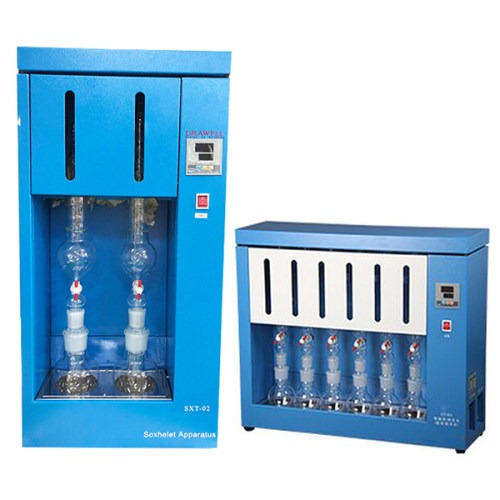Soxhlet extraction stands as a well-established method widely employed in laboratories and industries to extract a diverse array of chemicals from solid samples. This article provides a comprehensive guide covering the steps involved in soxhlet extraction, factors affecting its efficiency, and essential safety considerations for a secure working environment.
Follow the Soxhlet Extraction Steps:
Soxhlet extraction is a continuous process involving the cycling of a solvent through a solid sample to extract the desired chemical. Follow these steps for effective Soxhlet extraction:
Prepare the Soxhlet Extractor: Assemble the apparatus, connect the condenser, and attach the syphon tube. Place glass wool or filter paper in the Soxhlet flask to prevent material escape.

Weigh the Solid Sample: Measure an appropriate amount of the solid sample and insert it into the Soxhlet flask.
Add the Solvent: Pour sufficient solvent into the round-bottom flask to cover the solid material, choosing a solvent compatible with the target chemical.
Start the Extraction: Heat the round-bottom flask, causing the solvent to vaporize and extract the target component from the solid sample.
Continue the Extraction: Run the extraction for several hours or overnight, allowing the solvent to cycle through the sample, extracting the target chemical.
Collect the Extracted Solution: Once complete, separate the round-bottom flask with the solution from the Soxhlet flask containing the solid sample.
Remember the Efficiency Affecting Factors of Soxhlet Extraction:
Efficient Soxhlet extraction relies on understanding and optimizing various factors:
Sample Characteristics: Particle size, surface area, and composition influence extraction efficiency. Properly choose and prepare the sample for optimal contact with the extraction solvent.
Solvent Selection: Choose a polar solvent with a high boiling point, compatible with both the target chemicals and the solid material.
Extraction Time and Temperature: Manage the duration and temperature to balance extraction yields without degrading heat-sensitive chemicals.
Extraction Cycles: Determine the optimal number of extraction cycles for each sample and chemical to avoid diminishing returns.
Extraction Thimble: The type and condition of the extraction thimble impact extraction efficiency; choose the material and pore size carefully.
Agitation and Reflux Rate: Adjust the solvent cycling pace to promote sample-solvent interaction without causing packing or channeling.
Solvent-to-Sample Ratio: Optimize the ratio to ensure enough solvent for extraction without dilution, varying based on sample type.
Operator Skills and Experience: Operator proficiency and attention to detail during assembly and operation can influence extraction efficiency.

Take Safety Considerations During Soxhlet Extraction:
Prioritize safety during Soxhlet extraction with the following precautions:
Ventilation: Perform Soxhlet extraction in a well-ventilated space or under a fume hood to reduce solvent vapor exposure.
Personal Protective Equipment (PPE): Wear appropriate gear like gloves, goggles, and a lab coat to prevent solvent contact and splashes.
Solvent Selection: Choose solvents carefully, considering toxicity and combustibility, and follow proper handling, storage, and disposal practices.
Heat Safety: Use heat-resistant gloves, secure electrical connections, and employ heating equipment with temperature controls to prevent burns or fires.
Equipment Handling: Follow manufacturer instructions for proper handling, operation, and maintenance of soxhlet extractors.
Monitoring: Regularly check the extraction process for any leaks, blockages, or other issues.
Emergency Preparedness: Keep spill kits, fire extinguishers, emergency eyewash, and showers accessible, and know how to respond to accidents.
Training and Supervision: Only experienced individuals should operate Soxhlet extraction equipment, with supervision for novices.
Proper Cleanup and Disposal: Dispose of used solvents and debris according to local regulations and ensure proper equipment cleaning.
Conclusion:
Soxhlet extraction, when approached with knowledge, skill, and safety protocols, proves to be an efficient and secure method for extracting various chemicals from solid samples. Adhering to proper procedures ensures reliable results while minimizing risks in the laboratory environment.